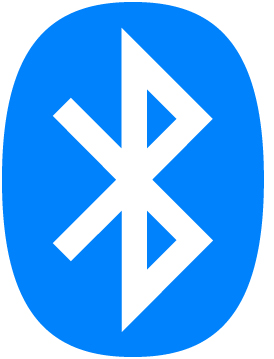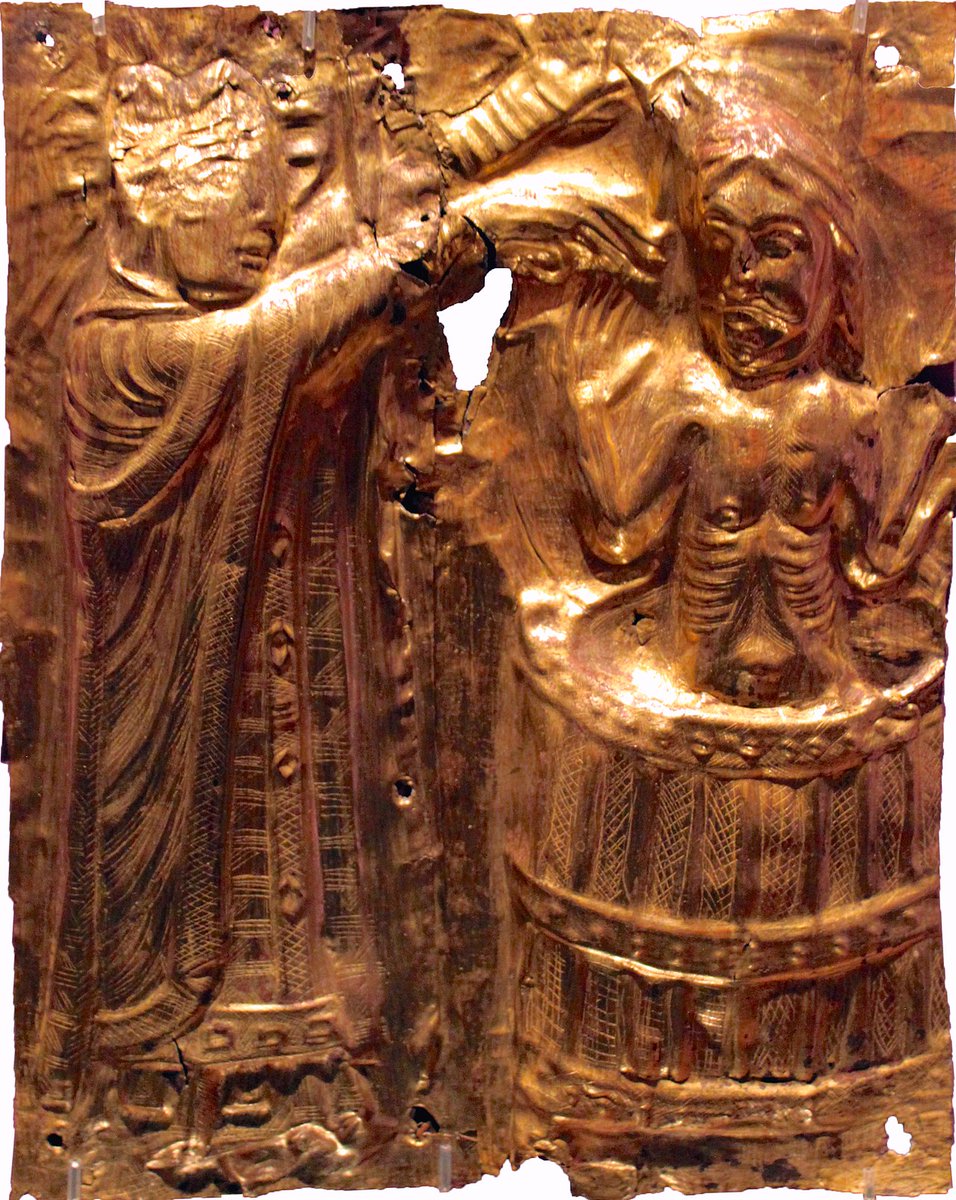The story starts in 1996, when Intel, Ericsson, and Nokia met to plan the standardization of a short-range radio technology, connecting a wide range of devices.
During this meeting, Jim Kardach from Intel suggested Bluetooth as a temporary code name.
Because of this guy: Harald "Bluetooth" Gormsson (king of Denmark from c. 958 – c. 986) - he& #39;s the one on the right, being baptized by Bishop Poppo c.960
Image by Anagoria on Wikipedia, CC BY 3.0
Image by Anagoria on Wikipedia, CC BY 3.0
Jim had been reading Frans G. Bengtsson& #39;s historical novel & #39;The Long Ships& #39; (1941-1945). The novel was about Vikings - and our 10th-century Danish King Harald Bluetooth.
Jim was quoted as saying “King Harald Bluetooth…was famous for uniting Scandinavia just as we intended to unite the PC and cellular industries with a short-range wireless link.”
(FYI: the traditional explanation for King Harald& #39;s nickname is that Harald had a conspicuous bad tooth that appeared "blue")
Ahead of the roll-out of this technology, the project name of Bluetooth was to be replaced with either RadioWire or PAN (Personal Area Networking).
PAN was the front runner, but searches revealed this acronym was already widely mentioned across the internet.
A full trademark search on the alternative choice - RadioWire - wasn& #39;t able to be completed ahead of the launch deadline, making & #39;Bluetooth& #39; the only choice.
Fortunately, Bluetooth became widely popular and synonymous with this technology.
The symbol within is a bind rune (i.e. a ligature) merging the Scandinavian runes ᚼ (Hagall) and ᛒ (Bjarkan).
...which were King Harald& #39;s initials.
So there you are. The next time you connect your wireless headphones to your phone, you& #39;ll know a 10th-century Danish king is connected as well.
Thanks for reading. More info on @BluetoothSIG& #39;s website > http://www.bluetooth.com/about-us/bluetooth-origin/">https://www.bluetooth.com/about-us/...

 Read on Twitter
Read on Twitter





